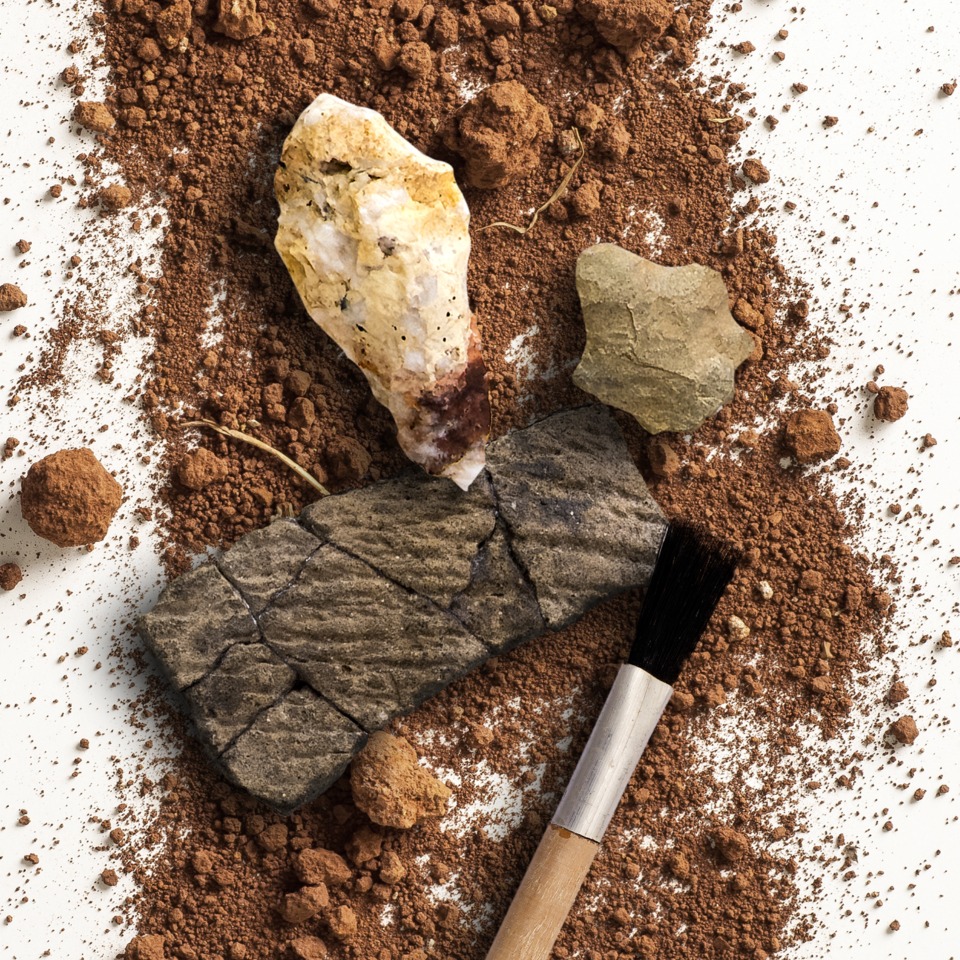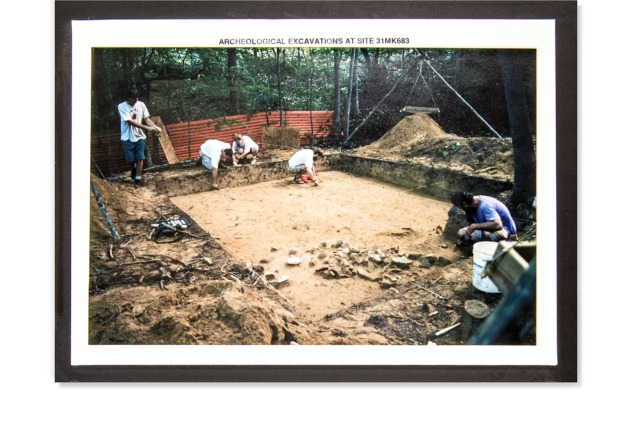
Back-Nine Find
A Ballantyne golf course reveals ancient Native American site
By Pam Glass
Many locals may not know that the unassuming label “31MK683” represents a Native American history in Ballantyne dating back thousands of years. The label is a North Carolina archeological identifier for an excavation that took place on a back-nine hole of the Ballantyne Country Club golf course.
In 1994, the course’s developers unearthed an archaic campsite whose artifacts provided authentic clues to the purpose and timeline of the site. Collected plant fossils and rocks, showing alteration from heat and wear and tear, exposed what experts believe was a seasonal hunting campground used by Native Americans as far back as the Archaic Period. According to the University of North Carolina at Chapel Hill’s Research Laboratories of Archeology website, the Archaic Period was 8000 and 1000 B.C.

Additionally, the Morrow Mountain projectile point suggests to analysts that the inhabitants had a vast mobility range. These points are composed of rock from the Uwharrie Mountains, a terrain over 70 miles from the campsite.
Excavators also found pottery with unique, braided patterns specific to the Middle Woodland Period. “Four hundred B.C. to A.D. 800 is a good date range for the Piedmont area of this time,” says David Cranford, an assistant state archaeologist for North Carolina’s Office of State Archeology. “Most North Carolina pottery types are defined and identified through a combination of its surface treatment, like the cord markings.”
European glass beads were another key finding at the dig. These antiquities made their way across the shores to America, signifying handling during the Contact Period, when European traders first interacted with Native Americans. Back then, traders used beads to barter for various goods, such as animal skins.
Amazingly, archaeologists also uncovered a key artifact, the Morrow Mountain projectile point. This multifunctional tool could puncture, spear, cut and scrape. Along with other cutting tools and heat-altered rocks, it informed archaeologists that plant and animal foraging, processing and cooking were likely the primary activities of the camp.


